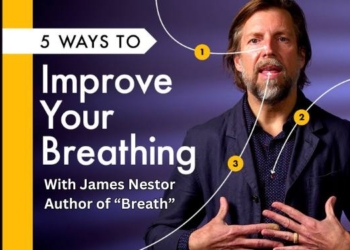
By Brandon Turbeville | Natural Blaze
Between the years of 2010 and 2015, large national surveys demonstrated that teen mental health vastly deteriorated.
The number of U.S. teens who felt useless and joyless grew by 33% and teen suicide attempts grew by 23%. The number of 13-18 year olds who actually committed suicide jumped to 31%.
In a paper published in Clinical Psychological Science, researchers found that increases in suicide, suicide attempts and depression were found in teens from every background including races, ethnicities and social class.
These increases were also found in every region across the country.
Previously, it was thought that millennials were the most heavy sufferers of mental health issues of all the generations. But it appears that young people born after 1995 are at much more risk than even millennials.
This begs the question as to what would cause such sudden increase in depression and suicide.
Jean Twenge, professor of psychology at San Diego State University, links that increase back to the appearance of the Smart Phone.
Because the years between 2010 to 2015 were a period of steady economic growth and falling unemployment, it’s unlikely that economic malaise was a factor. Income inequality was (and still is) an issue, but it didn’t suddenly appear in the early 2010s: This gap between the rich and poor had been widening for decades. We found that the time teens spent on homework barely budged between 2010 and 2015, effectively ruling out academic pressure as a cause.
However, according to the Pew Research Center, smartphone ownership crossed the 50 percent threshold in late 2012 – right when teen depression and suicide began to increase. By 2015, 73 percent of teens had access to a smartphone.
Not only did smartphone use and depression increase in tandem, but time spent online was linked to mental health issues across two different data sets. We found that teens who spent five or more hours a day online were 71 percent more likely than those who spent less than an hour a day to have at least one suicide risk factor (depression, thinking about suicide, making a suicide plan or attempting suicide). Overall, suicide risk factors rose significantly after two or more hours a day of time online.
Of course, it’s possible that instead of time online causing depression, depression causes more time online. But three other studies show that is unlikely (at least, when viewed through social media use).
Two followed people over time, with both studies finding that spending more time on social media led to unhappiness, while unhappiness did not lead to more social media use. A third randomly assigned participants to give up Facebook for a week versus continuing their usual use. Those who avoided Facebook reported feeling less depressed at the end of the week.
The argument that depression might cause people to spend more time online doesn’t also explain why depression increased so suddenly after 2012. Under that scenario, more teens became depressed for an unknown reason and then started buying smartphones, which doesn’t seem too logical.
Twenge is wrong that the years of 2010 – 2015 showed steady economic growth and falling unemployment. In fact, those years saw greater unemployment in terms of real numbers and living standards fall further than they had in years before. So it is likely that economic factors could play a role. However, Twenge is right to point out the link between constant interaction on social media and smart phones and greater depression.
Twenge also points out how being glued to a smart phone reduces the amount of face-to-face time with other human beings and leads to social isolation.
Basically, as Twenge writes, “teens have spent less time on activities known to benefit mental health (in person social interaction) and more time on activities that may harm it (time online).”
Related Article: Tech Billionaires Are Secretly Funding a Plan to Break the Human Race out of The Matrix
Twenge also points out that teens who spend more time on their phones also might be sleeping less.
But there are also other factors including today’s economy, increased pressure at school from the educational system itself which is often militaristic, confusing, non-productive and filled with outright propaganda that assail the senses of an adult much less a teenager.
Video games, television, music and pornography all play a role as well since the type of information one is exposed to has a definite effect on one’s outlook and overall mental state, particularly if that exposure lasts for a great deal of time.
If teens feel hopeless it is perhaps that they are being exposed to hopelessness in being prepared to be “good citizens” in an apparently hopeless world.

Brandon Turbeville – article archive here – is an author out of Florence, South Carolina. He is the author of six books, Codex Alimentarius — The End of Health Freedom, 7 Real Conspiracies,Five Sense Solutions and Dispatches From a Dissident, volume 1 and volume 2, The Road to Damascus: The Anglo-American Assault on Syria,and The Difference it Makes: 36 Reasons Why Hillary Clinton Should Never Be President. Turbeville has published over 1,000 articles dealing on a wide variety of subjects including health, economics, government corruption, and civil liberties. Brandon Turbeville’s podcast Truth on The Tracks can be found every Monday night 9 pm EST at UCYTV. He is available for radio and TV interviews. Please contact activistpost (at) gmail.com.














![Everything You Ever Wanted to Know About 9/11 Conspiracy Theory in Under 5 Minutes [VIDEO] | by James Corbett](https://consciouslifenews.com/wp-content/uploads/2018/09/911-a-conspiracy-theory-120x86.jpg)
